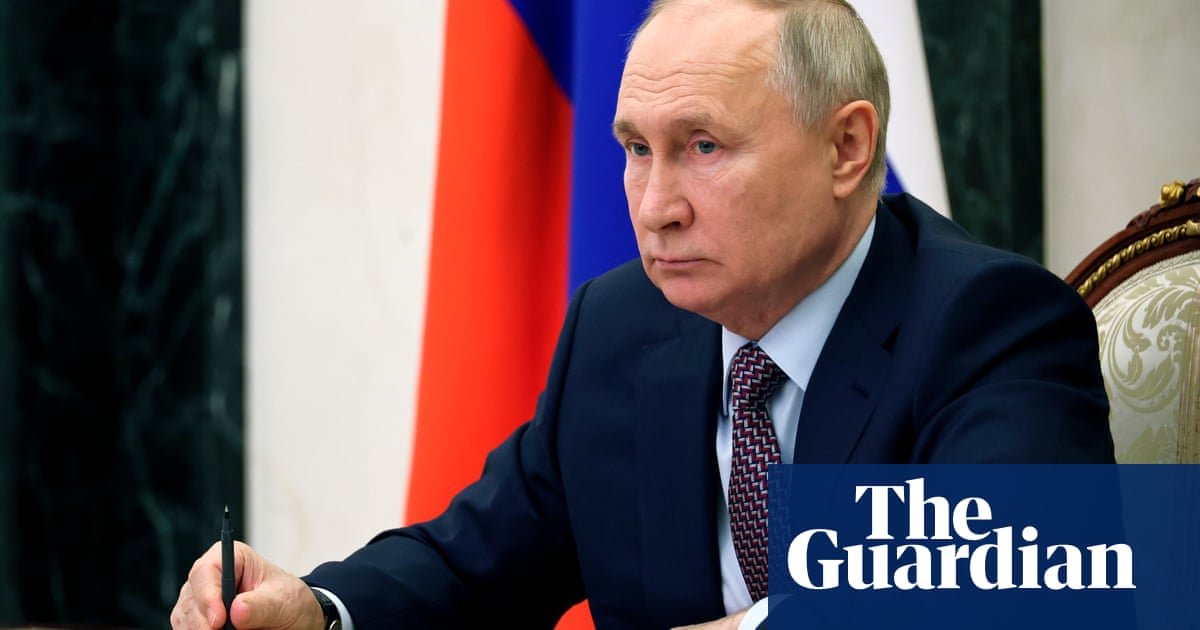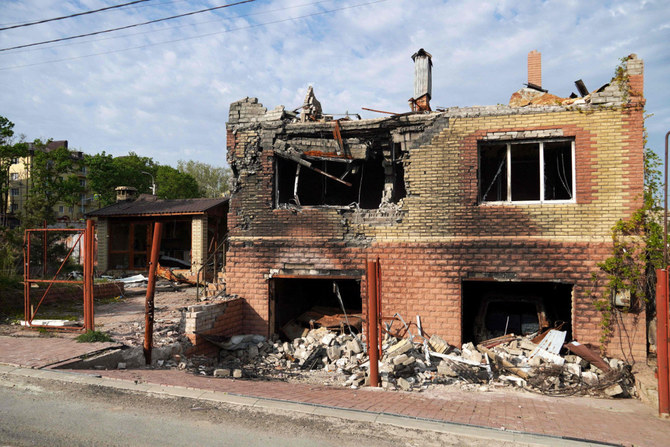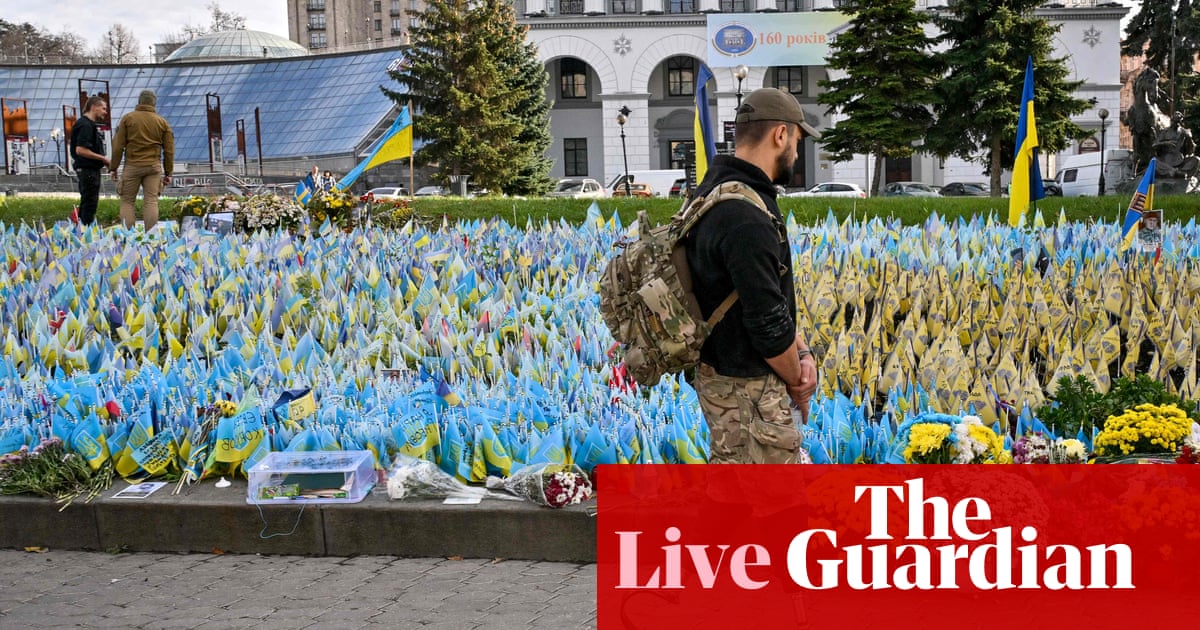
Ukraine will be responsible for its own destruction if it undermines existing peace agreements, a senior Russian diplomat has warned at a UN security council debate on the crisis.
Vasily Nebenzya on Monday derided western claims of a planned Russian attack as “hysterics” and blamed Ukraine for not abiding by the Minsk agreements of 2014 and 2015, which were supposed to end the conflict between the Kyiv government and the Russian-backed separatists in the Luhansk and Donetsk regions.
Nebenzya, Russia’s permanent representative at the UN, also blamed western nations for “actively pumping Ukraine full of weapons” which he said would be used against civilians in the east of the country and were “in violation of the Minsk agreements”.
He ended his address to the security council with a warning.
“If our western partners push Kyiv to sabotage the Minsk agreements, something that Ukraine is ... willingly doing, then that might end in the absolute worst way for Ukraine,” Nebenzya said. “And not because somebody has destroyed it, but because it would have destroyed itself and Russia has absolutely nothing to do with this.”
The US had called for an emergency debate on Ukraine as part of a diplomatic campaign to fend off what Washington and its allies say is a planned Russian invasion of Ukraine. As part of that campaign, the US and the UK both announced that pro-Putin Russian oligarchs would be targeted if an attack goes ahead.
Russia had sought to stop a security council debate on Ukraine until after it took over the council presidency on Tuesday. But only China supported its opposition, with Gabon, India and Kenya abstaining, leaving the US with more than the nine votes required to proceed with an open session on the crisis.
In her remarks, the US envoy, Linda Thomas-Greenfield, said that even as the issue was being debated in New York, Russia continued to add to the more than 100,000 troops already massed around Ukraine’s borders, and within days would have 30,000 inside Belarus alone.
“Russia has already used more than 2,000 rail cars to move troops and weaponry from across Russia to the Ukrainian border,” Thomas-Greenfield said. “Russia has also moved nearly 5,000 troops into Belarus, with short-range ballistic missiles, special forces and anti-aircraft batteries. We’ve seen evidence that Russia intends to expand that presence to more than 30,000 troops near the Belarus-Ukraine border, less than two hours north of Kyiv, by early February.”
Speaking towards the end of the session, the Ukrainian envoy, Sergiy Kyslytsya, described the Russian build-up of troops and military hardware around his country’s borders and did not echo President Volodymyr Zelenskiy’s complaints that the West was exaggerating the threat.
Kyslytsya said there were now 112,000 Russian troops massed around Ukraine’s borders and in Crimea, with another 18,000 deployed at sea off the country’s coast.
He pointed to the sophistication of the weapons being gathered in Belarus, including Iskander missiles, Pantsir anti-aircraft systems and advanced Sukhoi-35 jet fighters.
Kyslytsya also said Russia was bolstering paramilitary separatist forces in eastern Ukraine, which he estimated as 35,000-strong, including 3,000 Russian troops “in command posts and in other critical combat positions”.
In naval exercises in the Black Sea which started last week, the Ukrainian envoy said the Russians had deployed frigates, battleships, missile ships, assault landing ships and minesweepers.
Another six battleships from Russia’s northern fleet were reported to have entered the Mediterranean on Monday. According to the Italian newspaper la Repubblica, the vessels are carrying 60 tanks and more than 1,500 soldiers. The warships are currently navigating in the Sicilian Channel under aerial surveillance from Nato planes.
Ukraine’s former defense minister, Andriy Zagorodnyuk, said that if the ships entered the Black Sea, the odds would tip on the likelihood of a Russian attack.
In his comments to the security council, Nebenzya insisted that the military exercises were nothing out of the ordinary.
“The deployment of Russian troops within our own territory has frequently occurred on varying scales before and has not caused any hysterics whatsoever,” he said, claiming that Russian troops were “in their own areas of deployment and barracks where they were before”.
Military analysts studying satellite imagery of the buildup in Belarus say the military units are coming from Russia’s far east and their deployment in such large numbers so far from base is unprecedented since the cold war.
The Belarus envoy to the UN, Valentyn Rybakov, said the Russian troops were in his country for joint exercises from 10 to 20 February “to develop joint measures to eradicate the threat on the borders of our allied state, including caused by the migration crisis and the need to stabilize the humanitarian situation”.
The two nations’ combined forces, Rybakov said, would organize the defense of “strategically important facilities” and would “curb and ward off external active aggression”.












